7 Faberge masterpieces on display at the Victoria and Albert Museum in London
Categories: Economy | Exhibition | People | Photo project | Production | Society | World
By Vika https://pictolic.com/article/7-faberge-masterpieces-on-display-at-the-victoria-and-albert-museum-in-london.htmlJeweler Carl Faberge is famous for his magnificent Easter eggs, which he made for the Russian royal family. However, in addition to eggs, he made much more jewelry.
The most famous Russian jeweler, Karl Faberge, was also famous in Great Britain, and in 1903 he opened a branch of his firm in London. Since then, a large collection of his treasures has been kept outside of Russia and successfully survived the Bolshevik Revolution of 1917. However, the jewelry left in Russia was sold to private collectors around the world. But later, most of them returned to various Russian museums, including the recently opened Faberge Museum in St. Petersburg.
The new Victoria and Albert exhibition in London "Faberge in London: from the novel to the revolution" is the first Faberge exhibition since 1977 (in honor of the Queen's Silver Jubilee). And to the British collection from Her Majesty Queen Elizabeth II, Wartzki, and other private collections, the collections of Russian guests will be added - these stunning works are presented below.
7 PHOTOS
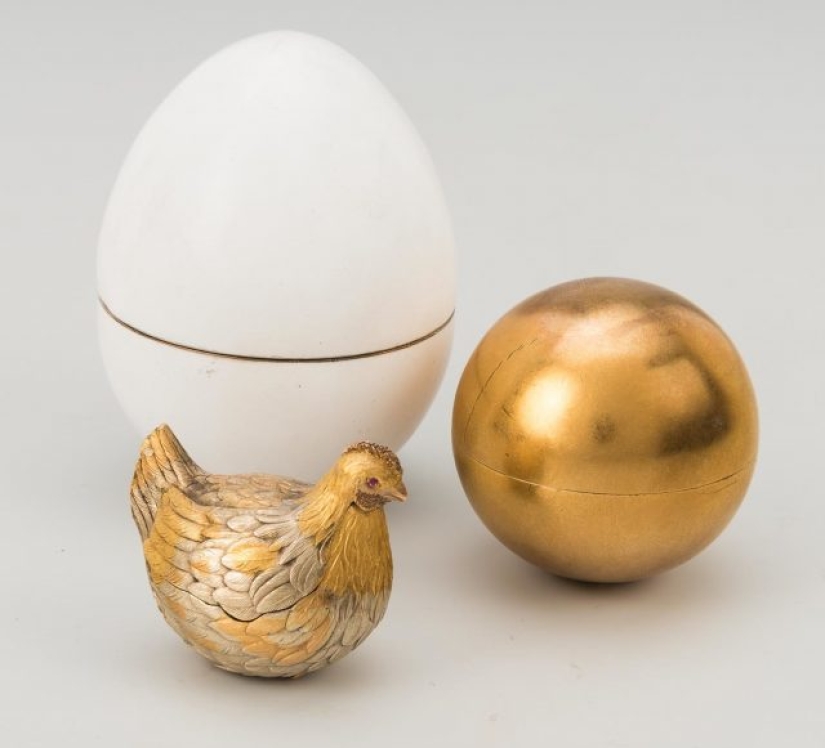
1. The first chicken, 1885
This fairly simple golden egg was the first-ever Fabergé Easter egg. Master Eric Collin completed the idea of a nesting doll - chicken and yolk can be placed inside an egg white. Emperor Alexander III presented this egg to his wife Maria for Easter and was so thrilled that ordering the bejeweled egg became a tradition for the Russian royal family, and Faberge craftsmen made 50 more eggs in the following years.
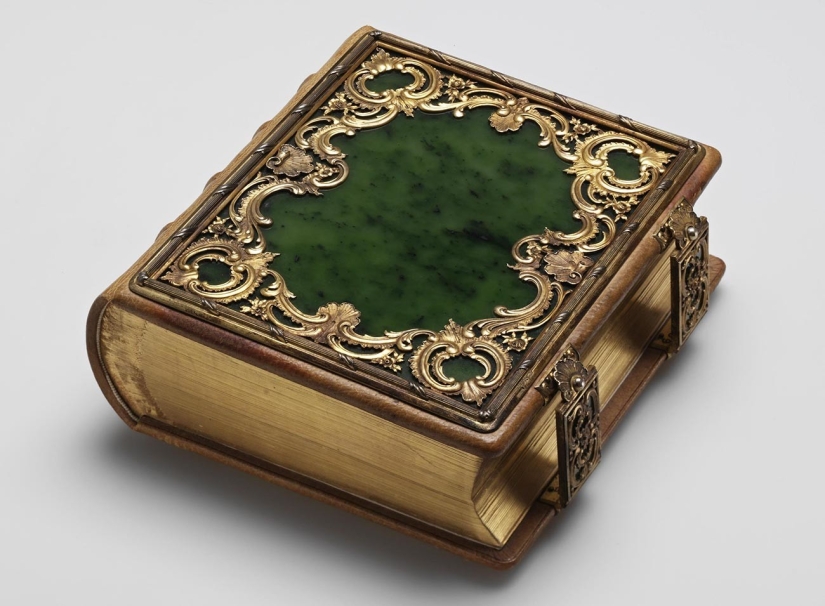
2. Prayer book, 1896
The master of another Faberge firm, M. Perkhin, made a precious binding for the prayer book, which Nicholas II presented to his wife Alexandra on the day of their coronation. It was a symbolic gift, as Alexandra was baptized in Orthodoxy in order to marry the future Russian tsar.
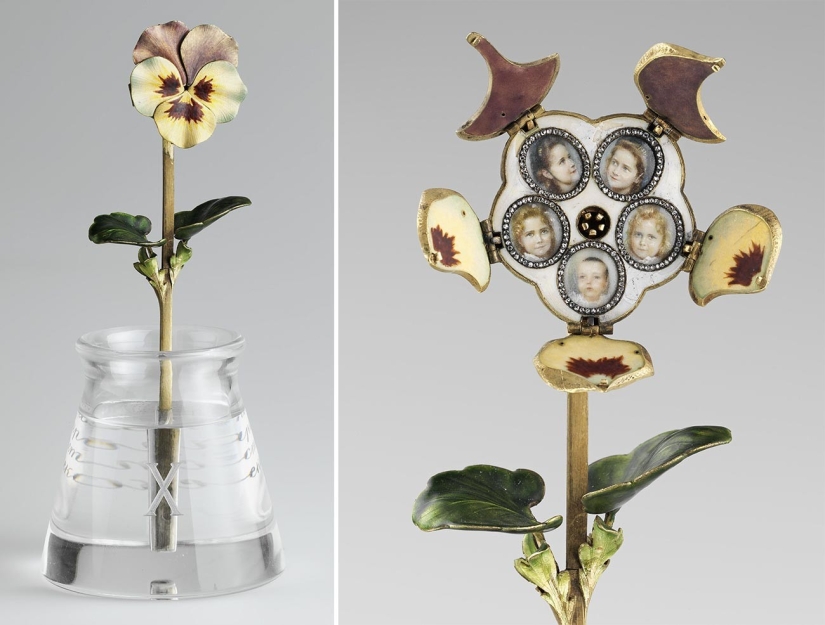
3. Pansies, 1904
The pearl flower was created by Henrik Wigström from gold, diamonds, turquoise, rock crystals, and stone. According to the tradition laid down by his father, Nicholas II presented this masterpiece to his wife Alexandra for the 10th anniversary of their marriage.
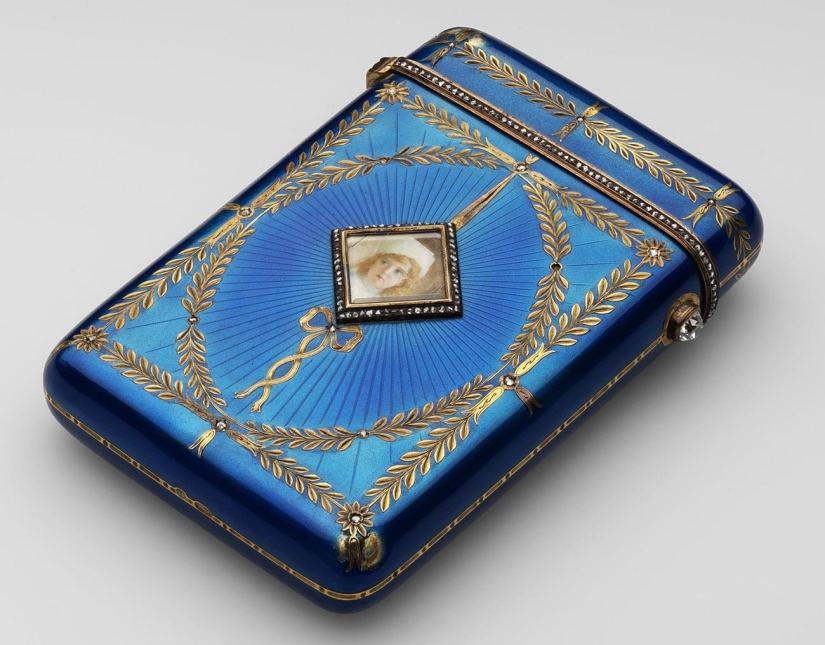
4. Cigarette case. 1906 g.
Nicholas II smoked a lot and, of course, even a simple cigarette case that belonged to the tsar was an exquisite decoration.

5. Easter egg "Moscow Kremlin", 1904-1906.
This Easter egg is made of gold, silver, glass, onyx, and enamel. It not only has a great design but also works as a real music box. The central white part resembles the Kremlin's Assumption Cathedral. Another gift from Tsar Nicholas II to his wife.
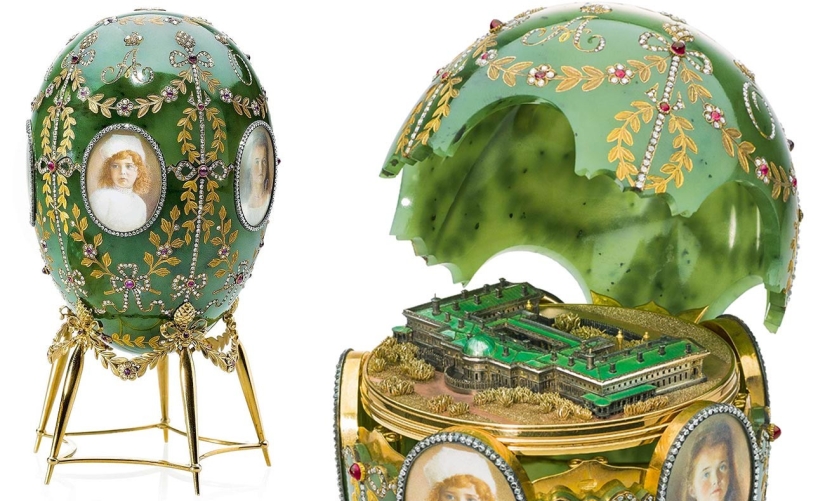
6. Easter egg "Alexander Palace". 1908 g.
Master Henrik Wigström made an egg from jade, diamond, ruby and, of course, gold. This was the order of Nicholas II for Easter 1908. Nicholas II and his wife lived in the Alexander Palace in Tsarskoe Selo near St. Petersburg. And inside this jeweled egg is a tiny model of the palace.
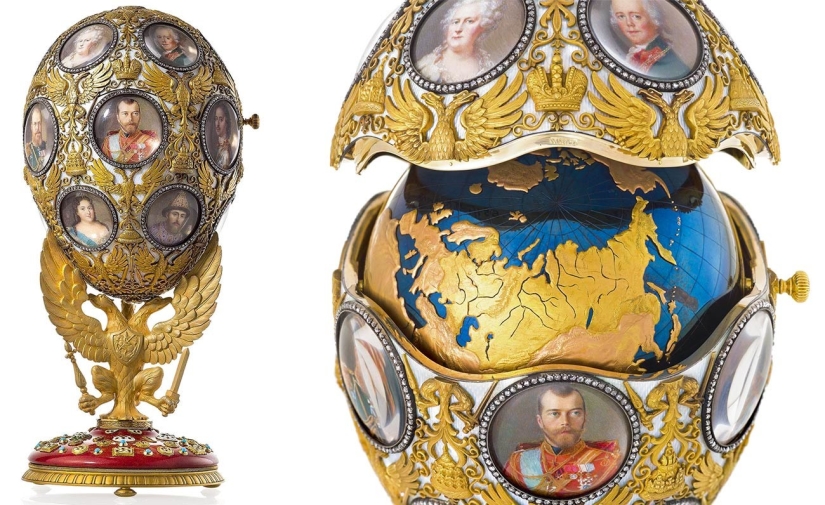
7.300th anniversary of the Romanovs, 1913
In 1913, marking the 300th anniversary of the reign of the Romanov dynasty on the Russian throne, Nicholas II presented Alexandra with this Easter egg. The stone depicts portraits of 18 rulers: from Mikhail, the first of the Romanov dynasty, to Nicholas II himself, who later tragically turned out to be the last king of the dynasty. The egg, made by Henrik Wigstrom and Vasily Zuev, is located on the symbol of the Russian Empire - the two-headed eagle.
Keywords: Jeweler | Jewelry | Masterpieces | Eggs | History | Russian | Family | Royalty | London | Museum
Post News ArticleRecent articles

Today, breast augmentation is the most popular plastic surgery. Every year, a quarter of a million women get silicone implants to ...

One of the most popular Polish artists of the 20th century, Zdzislaw Beksinski, almost never gave titles to his works. This is also ...
Related articles

There is always a lot of gold in the shots from India, where there are women and men in national clothes. Some residents of this ...

The word "still life" recall the paintings of ripe vegetables and fruits. Spanish Studio QUATRE CAPS decided to create an unusual ...

A good designer can even banal things to make a work of art. Bad — on the contrary, spoil, and even problems will create. Here ...

Airports are facilities that take up quite a lot of space. People do not always have the luxury of allocating vast areas of ...